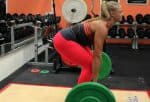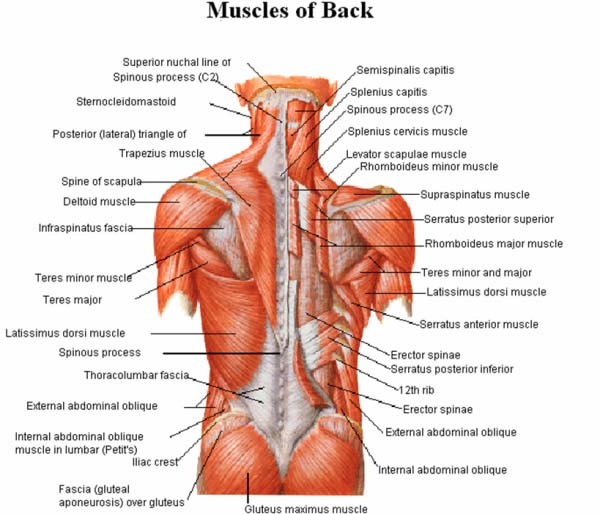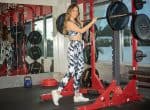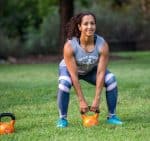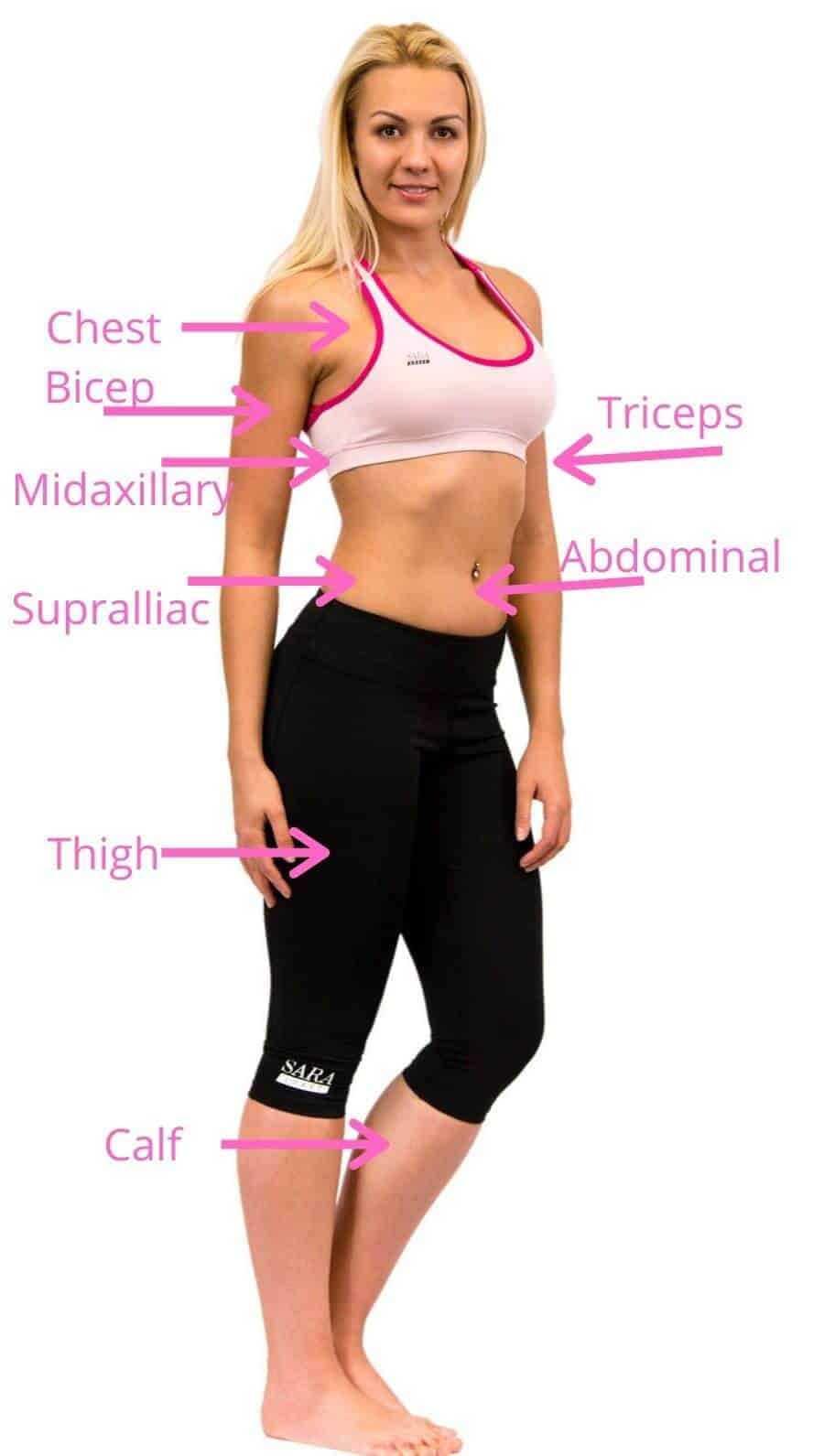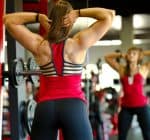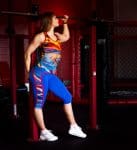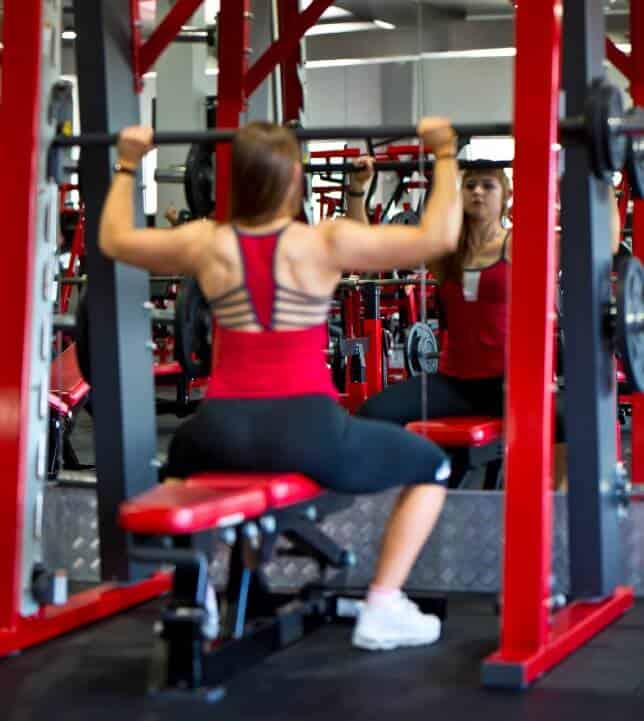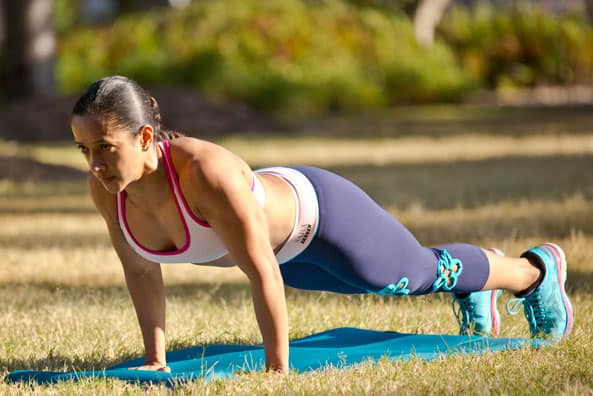Are you looking for a workout that can target multiple muscle groups and help prevent injuries? Deadlifts might just be the exercise for you. They engage multiple muscle groups including your glutes, hamstrings, lower back and shoulders, providing a full-body workout with an emphasis on your rear chain.
But how do you perform them correctly to reap these benefits? In this article, we will delve into the mechanics of deadlifting, discuss their advantages over squats, and provide insights on things like how much weight is considered good, are deadlifts bad for your back, what is proper technique, variations of deadlifts and other issues that you've probably wondered about.
If you've just started lifting, or even have been strength training for a while, but eying off the people hauling massive deadlifts off the floor with a healthy dose of skepticism, I'm going to give you the answer to those doubts.
Get ready to discover the power of deadlifts and take your fitness journey to new heights.
Key Takeaways
- Deadlifts target multiple muscle groups including the hamstrings, glutes, and lower back, leading to overall strength and improved athletic performance.
- Improper technique and lack of warm-up can increase the risk of injury during deadlifts.
- Beginners should have a solid foundation of overall strength before incorporating deadlifts into their routine, and proper technique is crucial.
- Deadlifts stimulate muscle growth, improve posture and stability, and enhance functional strength. Proper form and gradual progression should be followed to safely reap the benefits of deadlifting.
Deadlifts reward you with results!
Click to Tweet
What Are Deadlifts?
Deadlifts are a fundamental compound exercise that targets multiple muscle groups, making them one of the most effective exercises for building overall strength and power.
Here are some key points about deadlifts:
- Deadlift Variations: There are various deadlift variations you can incorporate into your training routine, such as conventional deadlifts, sumo deadlifts, Romanian deadlifts, and trap bar deadlifts. Each variation places emphasis on different muscle groups and offers unique benefits.
- Proper Technique: Mastering proper technique is crucial when performing deadlifts to prevent injury and maximize results. Key elements include maintaining a neutral spine, engaging the core muscles, hinging at the hips while keeping the chest up, gripping the bar with an overhand or mixed grip, and driving through the heels during the lift.
- Benefits of Deadlifting: Deadlifting offers numerous benefits beyond just building strength. It improves posture and stability, increases bone density, enhances grip strength, boosts metabolic rate for fat loss, and can even help prevent lower back pain when performed correctly.t
- Common Mistakes: Some common mistakes in deadlifting include rounding or arching the back excessively, using too much weight without proper form or control, not fully engaging the glutes and hamstrings during the lift, and neglecting to warm up adequately before attempting heavy lifts.
- Hip Hinge Importance: The hip hinge movement pattern is essential in deadlifting. It involves properly loading your hips by pushing them backward while maintaining a straight spine. This engages your posterior chain muscles (glutes, hamstrings) effectively to generate power throughout the lift.
Deadlift Form & What Muscles Does Deadlifting Target
Deadlifting targets multiple muscle groups, including your hamstrings, glutes, and lower back. These big compound movements engage these muscles in a coordinated effort to lift the weight off the ground. The primary muscles targeted during a deadlift are your hamstrings, which run along the back of your thighs. They work together with your glutes to extend your hips and generate power. Your lower back muscles also play a crucial role in maintaining proper form and stability throughout the lift, and if you're performing the lift property then pretty much all of your back muscles will be engaged.
To perform deadlifts correctly, it is important to maintain proper form. This includes keeping your spine neutral by engaging your core muscles and avoiding any rounding or arching of the back. Additionally, it's essential to use an appropriate grip on the barbell and keep it close to your body throughout the movement.
Common mistakes when performing deadlifts include using improper technique or lifting too much weight without proper preparation. These errors can increase the risk of injury.
To prevent injuries during deadlifts, be sure to warm up adequately before starting each session. Incorporating dynamic stretches for both upper and lower body can help prepare your muscles for this demanding exercise. Focus on maintaining good posture throughout each repetition while gradually increasing weight over time as you become more comfortable with proper technique.
Understanding what causes injuries from the deadlift is crucial for safe training practices.
What Causes Injuries From the Deadlift
To prevent injuries while performing the deadlift exercise, it is important to warm up your muscles and maintain proper form. Deadlifting is a highly effective exercise for building strength and muscle mass, but it can also lead to injuries if not done correctly. Understanding the causes of these injuries is crucial to minimize the risk and maximize the benefits of deadlifting.
Here are some pointers about what causes injuries from the deadlift:
- Improper technique: Using incorrect form, such as rounding your back or lifting too much weight, can strain your lower back and increase the risk of injury.
- Lack of warm-up: Failing to adequately warm up your muscles before deadlifting can result in muscle strains or tears.
- Overtraining: Performing deadlifts too frequently without giving your body enough time to recover can lead to overuse injuries.
To address these potential risks, it is important to take necessary precautions when incorporating deadlifts into your workout routine. Now let's transition into discussing when a lifter should start deadlifting
When Should a Lifter Start Deadlifting
Once a lifter has developed sufficient strength and proper form, they can gradually incorporate deadlifts into their workout routine. While there is no specific starting age, or time for deadlifting, it is generally recommended that beginners start with a solid foundation of overall strength and conditioning. This can be achieved through a beginner program that focuses on compound movements like squats and lunges to build lower body strength before moving on to deadlifts.
Proper technique is crucial when performing deadlifts to avoid injury. The lifter should stand with feet hip-width apart, grip the barbell just outside the legs, keep the back straight, and engage the core muscles throughout the movement. It is important to avoid rounding or arching the back as this can put unnecessary strain on the spine.
To progress in deadlifting, a gradual progression plan of progressive overload should be followed. This involves increasing weight incrementally over time while maintaining proper form. Starting with lighter weights and gradually adding more weight through a cycle of increased reps or weight, will help build strength while minimising risk of injury.
Common mistakes in deadlifting include using too much weight before mastering proper technique, not engaging the core muscles, letting the bar swing away from the body and lifting with rounded or arched backs.
Now that you have learned about when to start deadlifting and how to do it properly, let's explore what makes deadlifting such a beneficial exercise for your overall fitness.
Benefits of the Deadlift
Transitioning into deadlifts can be an effective way to build overall strength and improve your fitness level. Deadlift benefits everyone, offering numerous benefits that make it a worthwhile addition to your workout routine. Consider the following advantages of incorporating deadlifts into your training:
- Increased muscle mass: Deadlifts work multiple muscle groups simultaneously, including the glutes, hamstrings, quadriceps, shoulders, core, and back. This compound movement stimulates muscle growth and development.
- Improved posture and stability: Deadlifting requires proper hip hinge technique, which helps strengthen the muscles responsible for maintaining good posture. It also enhances stability in the hips and lower back.
- Enhanced functional strength: By mimicking real-life movements like lifting objects from the ground, deadlifts improve your ability to perform daily activities with ease.
- Increased fat burning: Due to their high intensity nature, and the fact that engaging so many muscle groups allows you to lift heavier weights, deadlifts can help you burn a significant amount of calories during and after your workout.
- Enhanced cardiovascular health: Deadlifting can improve heart health by increasing blood flow throughout the body and promoting better cardiovascular function.
Increased Muscle Strength
You'll definitely notice an increase in muscle mass and strength if you add deadlifts to your workout routine. Deadlifts are a compound exercise that targets multiple muscle groups and promotes overall strength development. Here are some reasons why deadlifts can help you achieve increased muscle power:
- Improved Grip Strength: Deadlifts require a strong grip to lift heavy weights, which can lead to enhanced grip strength.
- Enhanced Athletic Performance: The explosive nature of deadlifts helps develop power and speed, leading to improved athletic performance.
- Reduced Risk of Back Pain: By strengthening the muscles in your back, deadlifts can help reduce the risk of back pain and improve spinal stability.
Incorporating deadlifts into your routine will not only boost your muscle strength but also offer several other benefits. One such benefit is improved posture.
Improved Posture
Incorporating deadlifts into your routine can lead to improved posture, as deadlifts work the entire posterior (rear) chain, the muscles in your back. Deadlifts target several key muscle groups, including the erector spinae, glutes, hamstrings, and core muscles. By strengthening these muscles, deadlifts help maintain proper alignment of the spine and promote good posture. Deadlift variations such as sumo deadlifts or Romanian deadlifts can further enhance core stability training and increase grip strength.
To give you a better idea of how deadlifts can benefit your posture, take a look at the table below:
| |
|---|
Erector Spinae (back muscles) | Supports the spine and improves upright posture |
| Stabilizes the pelvis for optimal spinal alignment |
| Provides balance between hip flexion and extension |
| Strengthens abdominal and lower back muscles for improved stability |
Enhanced Athletic Performance
To enhance your athletic performance, it's important to focus on building strength and improving your overall fitness level. Incorporating deadlifts into your training routine can help you achieve these goals and take your performance to the next level.
Here are some benefits of deadlifts that can contribute to enhanced endurance, increased power, improved agility, better coordination, and enhanced speed:
- Deadlifts engage multiple muscle groups simultaneously, leading to improved overall strength and power.
- They target the posterior chain, including the glutes, hamstrings, and lower back muscles, which are crucial for explosive movements.
- Deadlifts require core stability and balance, which translates into better coordination during athletic activities.
By incorporating deadlifts into your workouts regularly, you can reap these benefits and improve your athletic performance across various sports or activities.
Now let's explore how a full body workout can further boost your results.
Full Body Workout
For a more comprehensive approach to your fitness routine, consider adding a full body workout that targets all major muscle groups. Full body strength training has numerous benefits for your overall health and fitness.
When you engage in compound exercises like deadlifts, squats, and bench presses, you activate multiple muscle groups simultaneously, resulting in greater muscle activation and improved muscular strength. This type of workout not only helps you build lean muscle mass but also enhances your posture and stability.
Weightlifting benefits extend beyond aesthetics; it can improve bone density, increase metabolism, and boost cardiovascular health. By incorporating full body workouts into your routine, you are maximizing the efficiency of your training sessions and reaping the rewards of a well-rounded strength training program including the benefit from deadlifts.
As you focus on building full body strength through compound exercises like deadlifts, squats, and bench presses, you'll experience an added bonus: a boosted metabolism.
Boosted Metabolism
When focusing on compound exercises your metabolism gets a boost. This means that incorporating these types of exercises into your workout routine can have a positive effect on your overall metabolic rate.
Here are three reasons why a boosted metabolism is beneficial for weight management:
- Increased Calorie Burn: Compound exercises like deadlifts, squats and bench presses require multiple muscle groups to work together, leading to a higher calorie burn during and after the workout.
- Fat Loss: With an increased calorie burn comes the potential for greater fat loss. When combined with a balanced diet, compound exercises can help you shed unwanted body fat.
- Energy Expenditure: The intensity of compound exercises increases energy expenditure, which can contribute to improved fitness levels.
By understanding how compound exercises boost metabolism, you can optimize your workouts for enhanced weight management and fat loss.
Now let's delve into injury prevention techniques to ensure your safety during these exercises.
Injury Prevention
Proper form and technique are essential for preventing injuries during compound exercises like squats and bench presses. The same holds true for deadlifts, which can be incredibly beneficial but also pose a risk if not performed correctly.
To minimize the chances of injury, it is important to focus on deadlift variations that suit your fitness level and goals. Incorporating core stability training into your routine will help you maintain proper alignment throughout the movement, reducing strain on the lower back. Additionally, working on improved grip strength will allow you to hold onto the bar securely, decreasing the likelihood of accidents.
In addition to injury prevention, another advantage of incorporating deadlifts into your workout routine is increased bone density.
Increased Bone Density
Incorporating deadlifts into your workout routine can help increase bone density, making them a valuable exercise for overall skeletal health. Deadlifts are not just about building strength; they offer numerous benefits that go beyond just muscles.
- Increased Bone Density: Deadlifts place stress on your bones, stimulating the body to build stronger and denser bones, reducing the risk of osteoporosis.
- Improved Posture: Deadlifts strengthen the muscles in your back and core, helping you maintain proper posture throughout the day.
- Enhanced Athletic Performance: By targeting multiple muscle groups at once, deadlifts improve overall strength and power, translating into better performance in sports or other physical activities.
Now let's explore how deadlifts can enhance functional movement patterns for optimal fitness.
Functional Movement Patterns
Functional movement patterns are essential for performing everyday tasks with ease and efficiency. When it comes to functional fitness, incorporating exercises that mimic natural movement patterns can have numerous benefits.
Movement patterns refer to the way your body moves during activities like squatting, bending, pushing, pulling, and rotating. By focusing on these patterns in strength training, you can improve your overall physical performance and reduce the risk of injury.
Functional exercises engage multiple muscle groups simultaneously, helping to build strength and stability in a more holistic way. This type of training has been shown to improve balance, coordination, flexibility, and mobility. It also enhances daily activities such as lifting heavy objects or climbing stairs.
Developing core stability is crucial for maintaining proper posture and spinal alignment during functional movements.
Core Stability Training
When focusing on core stability training, you'll find that exercises like planks and Russian twists are highly effective. These exercises provide numerous benefits for your core stability and overall fitness.
Here are three reasons why you should incorporate core stability training into your workout routine:
- Core stability benefits: Strengthening your core muscles can improve balance, posture, and reduce the risk of injuries.
- Core strength development: By engaging your deep abdominal muscles, obliques, and lower back muscles through specific exercises, you can develop a strong and stable core.
- Core training exercises: Along with planks and Russian twists, other effective core training exercises include bicycle crunches and side plank variations.
Having a stable core is not only important for everyday activities but also plays a crucial role in sports performance.
Improved Grip Strength
Now that you have learned about the importance of core stability training, let's focus on another key aspect of your overall strength and performance that you'll need to perform heavy deadlifts: grip strength.
Grip strength refers to the ability to hold onto objects firmly and securely. It plays a crucial role in various activities such as weightlifting, rock climbing, and helpfully, everyday tasks like carrying groceries.
Improving your grip strength can offer several benefits. Firstly, it enhances your performance in exercises like deadlifts by allowing you to maintain a solid grip on the barbell. Studies have shown that individuals with stronger grips tend to have better overall physical performance and reduced risk of certain injuries.
There are several techniques you can use to improve your grip strength. Grip training exercises such as farmer's walks, wrist curls, and plate pinches target the muscles involved in gripping. Incorporating these exercises into your routine can help increase hand and forearm strength, leading to heavier barbell deadlifts.
By improving your grip strength, you not only enhance your performance but also lower the risk of potential injuries during activities that require a strong grip.
In order to reap these benefits safely, it's crucial to take certain precautions when performing deadlifts:
- Begin with lighter weights: Gradually increase the load as you become more comfortable with proper form.
- Maintain a neutral spine: Avoid rounding or arching your back during the lift to prevent injury.
- Engage your core: Brace your abdominal muscles throughout the movement for added stability and support.
How to Do the Deadlift Correctly
Proper deadlift form is essential for maximizing strength gains and minimizing the risk of injury. Common deadlift mistakes, such as starting from a standing position or bouncing the weight off the floor, can lead to bad form and potential harm.
Deadlifting offers numerous benefits, including targeting multiple muscle groups simultaneously and improving overall strength and power. Additionally, there are various deadlift variations and modifications that can be incorporated into your workout routine to challenge muscles in slightly different ways and adding variety.
Understanding the importance of the hip hinge movement in proper deadlift technique is crucial for maintaining a neutral lower back and engaging the correct muscle groups.
Proper Deadlift Form
Using proper deadlift form ensures that you engage the correct muscles and reduce the risk of injury. Here are a few key points to consider:
- Common mistakes: Many people make errors when performing deadlifts, such as rounding their backs or lifting with their arms instead of their legs.
- Proper technique: By maintaining a neutral spine, keeping your chest up, and hinging at the hips, you can execute a deadlift with optimal form.
- Common injuries: Incorrect form can lead to injuries like strained back muscles or herniated discs.
By mastering the hip hinge and performing deadlifts correctly, you can experience numerous benefits such as increased strength in your posterior chain (muscles along your backside), improved posture, and enhanced athletic performance.
What are the most common mistakes individuals make when executing this powerful exercise?
Common Deadlift Mistakes
Let's discuss some common mistakes to avoid. One of the most frequent errors is rounding your back instead of maintaining a neutral spine. This puts excessive strain on your lower back and increases the risk of injury.
Another mistake is lifting with your arms instead of using your legs and hips to generate power. Remember, the deadlift is primarily a hip hinge movement, so focus on pushing through your heels and engaging your glutes.
Safety precautions are also crucial when performing deadlifts. Always start with lighter weights to master the technique before progressing to heavier loads. It's important to warm up properly and use a weightlifting belt for added support. It's become popular in some circles to not wear belts, claiming that it's better to develop a strong core. I don't disagree that a strong core is important, but not wearing a belt is both exposing yourself to unnecessary risk of injury, experiencing low back pain, and in fact limiting the weights you can deadlift. The smarter approach is to use the correct equipment and be able to work your largest muscle groups harder.
Mastering the hip hinge is key to performing a safe and effective deadlift. By understanding these common mistakes and taking necessary precautions, you can maximize the benefits while minimizing any potential risks.
There are variations and modifications you can explore based on your fitness level and goals. These include sumo deadlifts, Romanian deadlifts, trap bar deadlifts, or incorporating resistance bands, dumbbells or kettlebells.
Next, let's delve into the various benefits of incorporating deadlifts into your workout routine.
Deadlift Variations and Modifications
To maximize your workout and target different muscle groups, try incorporating various deadlift variations and modifications into your routine. Deadlift progressions offer a way to challenge yourself as you become stronger and more experienced.
One popular variation is the sumo deadlift, where you take a wider stance with your feet turned out. This targets the inner thighs and glutes more intensely.
Another effective option is the trap bar deadlift, which allows for a more upright torso position, reducing stress on the lower back.
The Romanian deadlift focuses on strengthening the hamstrings and glutes while emphasizing proper hip hinge mechanics.
Lastly, deficit deadlifts involve standing on a raised platform to increase range of motion and further engage the posterior chain muscles. This should only be introduced into the routines of experienced lifters.
By incorporating these deadlift variations into your routine, you can enhance overall strength and muscle development, break through plateaus or manage any other limitations you have.
Now let's discuss the importance of mastering the hip hinge movement pattern in order to perform these exercises effectively without risking injury or compromising form.
Importance of Hip Hinge
Make sure you engage your core and maintain proper form while performing the hip hinge movement pattern to effectively target and strengthen your posterior chain muscles.
- Hip mobility: Performing the hip hinge helps improve the flexibility and range of motion in your hips, allowing for better overall movement.
- Proper form: Maintaining proper form during the hip hinge ensures that you are engaging the correct muscles and reducing the risk of injury.
- Hip hinge technique: Mastering the hip hinge technique allows you to efficiently activate and strengthen your glutes, hamstrings, and lower back.
- Glute activation: The hip hinge specifically targets and activates your glute muscles, helping to develop a strong and toned posterior.
- Posterior chain engagement: By incorporating the hip hinge into your workouts, you engage your entire posterior chain, which includes muscles like the glutes, hamstrings, and erector spinae.
By focusing on these aspects of hip mobility, proper form, technique, glute activation, and posterior chain engagement during a hip hinge exercise or movement pattern like deadlifts, you can optimize your workout results while minimizing any potential risks or injuries.
Now let's explore some important safety precautions to consider when performing deadlifts.
Deadlift Safety Precautions
Remember, it's crucial to maintain a neutral spine alignment and engage your core throughout the entire movement when performing deadlifts. Proper lifting form is essential for maximizing the benefits of deadlift training while minimizing the risk of injury.
To ensure a safe deadlift technique, start by standing with your feet hip-width apart and gripping the barbell just outside your legs. Keep your back straight as you hinge at the hips, bending your knees slightly. As you lift the weight, push through your heels and use your glutes and hamstrings to power the movement. Avoid rounding or arching your back, as this can strain your spine.
Additionally, be sure to lift within a comfortable range of motion that allows you to maintain control and proper form throughout each repetition. By following these injury prevention tips and avoiding common mistakes such as using excessive weights or jerking motions, you can safely enjoy the benefits of deadlift training.
When it comes to deadlifts, should anyone avoid them?
Should Anyone Avoid Deadlifts
While deadlifts can be beneficial for most people, there are certain individuals who should avoid performing them. It's important to understand that not everyone is built the same way and some may have pre-existing conditions or limitations that make deadlifts unsuitable for them. Here are a few reasons why some individuals should consider avoiding deadlifts:
- Injury prevention: Deadlifts require proper technique and form to minimize the risk of injury. If you have a history of back problems or joint issues, it's best to avoid this exercise to prevent further damage, unless of course your physician or other medical specialist approves of you doing them as part of a rehabilitation plan.
- Avoidance benefits: Certain medical conditions, such as herniated discs or osteoporosis, can be aggravated by deadlifting. In these cases, it's crucial to prioritize your health and choose alternative exercises that target similar muscle groups without putting excessive strain on your body.
- Muscle targeting: Deadlifts primarily target the posterior chain muscles, including the glutes, hamstrings, and lower back. If you're focusing on other muscle groups or have specific goals in mind, there may be more appropriate exercises for you.
By understanding these factors and considering any individual limitations or conditions you may have, you can make informed decisions about whether or not deadlifting is suitable for you.
But, if you've heard that, "Deadlifts are one of the worst things you can do for your spine", I'd say that whoever you heard that from didn't consider the full picture. I really like the opinions on just that topic expressed by Tony Gentilcore and suggest that you give it a read.
Now let's explore another aspect related to deadlifting every day: should you do it?
Deadlifting Every Day: Should You Do It
While some people may argue that daily deadlifting can lead to overtraining and increased risk of injury, others believe it can be beneficial when done correctly.
Incorporating deadlifts into your daily routine can target multiple muscle groups, including your glutes, hamstrings, quadriceps, lower back, and core. However, it is crucial to prioritize proper technique and form to minimize the risk of injury. This means maintaining a neutral spine, engaging your core muscles, and lifting with your legs rather than relying solely on your back.
To prevent overtraining and give your body enough time to recover, it is generally recommended to limit deadlifting frequency to two or three times per week. This allows for sufficient rest between sessions and reduces the likelihood of developing muscle imbalances or chronic fatigue.
I would say that, if you can deadlift every day, you really aren't pushing yourself hard enough in your training sessions, as you really should need recovery time after a strength session which includes big compound lifts like the deadlift.
What Are Some Deadlift Variations
When it comes to deadlift variations, there are several benefits to consider.
Some popular deadlift variations include the sumo deadlift, trap bar deadlift, and Romanian deadlift.
Benefits of Variations
To get the most out of your deadlifts, you should try different variations for maximum benefits. Here are some reasons why incorporating deadlift variations into your workout routine can be advantageous:
- Increased muscle activation: Different variations target specific muscles, leading to greater overall muscle activation.
- Improved strength and power: Variations challenge your body in different ways, promoting strength and power gains.
- Reduced risk of injury: By varying the movement pattern, you can avoid overuse injuries associated with repetitive motions.
It's important to note that each variation has its pros and cons. Some may require more technique or flexibility, while others may focus on specific muscle groups. Modifying deadlifts for different fitness levels is crucial to ensure safety and progress. Understanding how each variation impacts muscle activation will help you choose the ones that align with your goals.
Popular Deadlift Variations
There are several popular deadlift variations that can be incorporated into your workout routine.
One such variation is the sumo deadlift technique, where you take a wider stance and grip the barbell with your hands inside your legs. This variation targets the inner thighs more effectively than the conventional deadlift.
Another popular variation is the Romanian deadlift, which focuses on strengthening the hamstrings and glutes while also improving hip mobility.
If you're looking for a different tool to perform deadlifts, try using a trap bar. The trap bar allows for a more upright posture and puts less stress on your lower back.
For those who want to challenge their balance and stability, one-legged deadlifts provide numerous advantages by engaging core muscles and enhancing proprioception.
Lastly, there are various modifications you can make to the conventional deadlift, such as using dumbbells or resistance bands.
Safety Considerations for Variations
When it comes to deadlift variations, there are several options that can cater to your individual needs and goals. However, it is important to consider safety when performing these exercises.
Here are some safety considerations for deadlift variations:
- Modified Deadlifts: If you're new to deadlifting or have certain limitations, modified deadlifts can be a great alternative. These include rack pulls or trap bar deadlifts, which allow for a shorter range of motion and less stress on the lower back.
- Alternative Exercises: If traditional deadlifts aren't suitable for you, there are alternative exercises that target similar muscle groups. Some examples include hip thrusts and glute bridges.
- Injury Prevention Strategies: To minimize the risk of injury while performing any type of deadlift variation, it's crucial to warm up properly, use appropriate weights, maintain proper form throughout the movement, and listen to your body's cues.
Let's explore reasons why some individuals may choose not to incorporate deadlifting into their workouts and who should avoid them altogether.
Reasons to Not Deadlift and Who Should Avoid Them
Some individuals with pre-existing back injuries or conditions may want to avoid deadlifts due to the strain they can put on the spine. While deadlifts are a popular exercise for building strength and muscle, they can also pose potential risks for certain individuals. If you have a history of back problems, it is important to consult with a healthcare professional before attempting deadlifts.
Here are some reasons why you might want to avoid deadlifts:
| | Alternatives to Deadlifts |
|---|
| | |
| | |
Aggravation of Existing Condition | | |
| | |
In addition to pre-existing injuries, age-related considerations and medical conditions should also be taken into account when deciding whether or not to perform deadlifts. Older adults and seniors may have decreased bone density or mobility limitations that make deadlifting unsafe. It is always recommended to work with a qualified fitness professional who can assess your individual situation and provide appropriate modifications or alternatives.
Are Deadlifts Safe and Effective for Older Adults and Seniors
Older adults and seniors should consider consulting with a fitness professional to determine if deadlifts are safe and effective for their individual needs. While deadlifts can offer numerous benefits, it is important to ensure that proper technique, modifications, and safety precautions are in place.
Here's why you should consider incorporating deadlifts into your fitness routine:
- Deadlift technique: A fitness professional can guide you on the correct form and technique to avoid injury and maximize results.
- Deadlift benefits: Deadlifting helps build lower body strength, increases muscle mass, improves posture, enhances bone density, and boosts overall functional fitness.
- Deadlift modifications: Fitness professionals can provide modifications based on your abilities and limitations, such as using lighter weights or performing variations like sumo or trap bar deadlifts.
Now let's explore how deadlifting can improve heart health without taking another 'step'.
Can Deadlifting Improve Heart Health
Incorporating deadlifts into your fitness routine can have a positive impact on heart health.
Deadlifting is a form of strength training that has been shown to improve endurance, provide cardiovascular benefits, aid in weight loss, and reduce the risk of heart disease.
When you perform deadlifts, your heart rate increases as you engage large muscle groups in your body. This increased heart rate helps to strengthen your cardiovascular system and improve its overall efficiency. By incorporating deadlifts into your routine regularly, you can enhance your endurance and stamina.
Moreover, deadlifting also promotes weight loss by burning calories and increasing metabolism. As a compound exercise that engages multiple muscles simultaneously, it requires more energy expenditure compared to isolation exercises. This combination of strength training and calorie burn can contribute to weight loss when combined with a balanced diet, all of which is great for your heart health.
Regular deadlifting can help reduce the risk of heart disease. Studies have shown that strength training exercises like deadlifts can lower blood pressure levels and improve cholesterol profiles.
Are Deadlifts Better Than Squats
When comparing deadlifts and squats, it's important to consider individual goals and preferences. Both exercises are excellent for building strength and muscle in your lower body, but they do target different muscle groups to varying degrees. Here are some key points to keep in mind when deciding which exercise is better for you:
- Deadlifts primarily target the posterior chain muscles, including the hamstrings, glutes, and lower back.
- Squats mainly focus on the quadriceps, glutes, and core muscles.
- There are various deadlift variations that allow you to target specific muscle groups or work on different aspects of strength, such as sumo deadlifts or Romanian deadlifts.
- It's crucial to maintain proper form during deadlifts to prevent injuries. Keep your back straight, engage your core muscles, and lift with your legs rather than your back.
- Deadlifting can improve overall strength and power, enhance posture and stability, increase bone density, boost metabolism for fat loss, and improve athletic performance.
- With proper form and appropriate training intensity, deadlifting can be a safe and effective exercise for older adults to maintain muscle mass, bone health, balance control, and functional independence.
How much is a good deadlift
To determine a respectable deadlift, it's important to consider factors such as your training experience and current strength levels. The ideal weight to aim for will vary depending on individual circumstances. However, proper technique is crucial regardless of the weight you lift. Deadlifting with correct form not only maximizes the benefits of this compound exercise but also minimizes the risk of injury.
When determining how often to include deadlifts in your training program, it's important to strike a balance between frequency and recovery time. Training frequency will depend on various factors such as your goals, fitness level, and other exercises in your routine. Generally speaking, performing deadlifts once or twice a week should be sufficient for most individuals.
To work out how much your maximum deadlift is, use our handy 1 rep max calculator below
As a general guide a beginner female should be able to deadlift half her body weight, and at the intermediate level around 1.5 x body weight with around 2 x body weight considered advanced to elite. For a male beginner it would be lifting his body weight as a beginner and 2 x body weight at an intermediate level with close to 3 x body weight being advanced to elite.
Incorporating deadlifts into your workout regimen can help prevent injuries by strengthening the muscles involved in lifting heavy loads safely. Deadlifting improves posture and enhances stability through the entire kinetic chain.
Are Deadlifts Better Than Squats?
When it comes to deadlifts, you might wonder if they're better than squats.
Well, picture this: deadlifts are like a powerful locomotive barrelling through your workout, targeting multiple muscle groups and building strength from head to toe.
While squats have their benefits too, deadlifts offer unique advantages. They engage your back, glutes, hamstrings, and core in a way that squats can't quite match.
Plus, there are various deadlift variations to keep things interesting and challenge your body in different ways.
Many people will argue that squats are the king of strength training, but when it comes to generating raw power it's hard to beat the deadlift.
Are Deadlifts Safe and Effective for Older Adults and Seniors?
Deadlifts can be safe and effective for older adults and seniors, but it's important to consider injury risks. To minimize the risk of injury, modifications can be made to accommodate the needs of older adults.
Deadlifting can benefit bone health by promoting bone density and strength. Seniors should focus on maintaining proper form during deadlifts to prevent strain or injury.
Additionally, there are various deadlift variations that are suitable for seniors, allowing them to safely engage in this exercise.
Can Deadlifts reduce belly fat?
Yes, performing deadlifts regularly as part of a well planned training program will reduce body fat. Deadlifts activate your entire system, and as your performance increases so will your calorie burn, which will work to reduce belly fat.
Are Deadlifts Good for Females?
Deadlifts can help you build the toned athletic body of your dreams. Strong is the new sexy, so yes and yes, deadlifts are good for females! Don't listen to any of the rubbish about weights making you bulky, get yourself to the gym experience the benefits of the exercise for yourself.
Conclusion
In conclusion, deadlifts are an incredibly beneficial exercise for your overall fitness. They target multiple muscle groups, including your legs, back, and core.
Deadlifting is great for improving strength and power, as well as enhancing functional movements in everyday life.
They really maximise the results you get from the time you're spending in the gym, so you get maximum bang for your buck, if your really focusing your efforts properly on the deadlift.
Remember, 'No pain, no gain' - put in the effort and you'll see the results!

